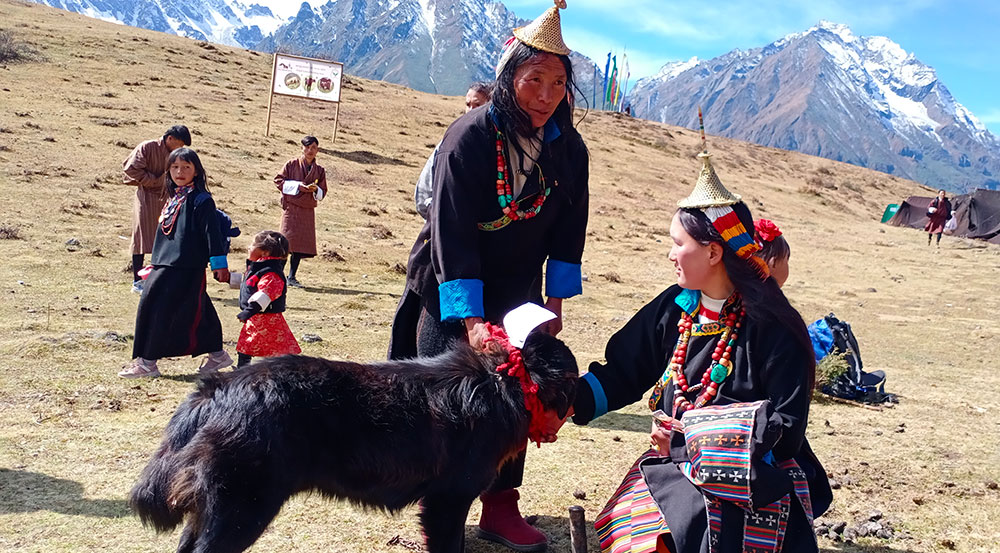Sherab Lhamo
Characterised by a thick double coat and a lion-like mane, with an average height of around 60cm and weighing between 40 to 70kgs, the Bhutanese Mastiff, known locally as Bjob-Khyi, rules the highlands.
This adaptation to the Bhutanese environment has earned them the moniker ‘dogs of nomads.’ During the highland festival every October, these majestic dogs participate in animal competitions alongside their owners.
As spectators observe, a sense of both awe and trepidation fills the air. Domchu, a five-year-old mastiff from Nyelu, Laya, draws attention.
Pema Dechen, Domchu’s owner, reassures a hesitant woman, “It’s ok, he won’t bite.” After a cautious photo session, Pema explains that despite Domchu’s calm demeanour in public, he transforms into a vigilant guard dog at home, demonstrating a protective nature.
Mastiff breeds, including the Tibetan Mastiff, are prevalent in Nepal, Bhutan, and North India.
Program Director of National Highland Research and Development Center, Dr Vijay Raika said, “Tibetan Mastiffs are considered as the mighty guardians of the Himalayas and serve as the progenitor of all modern mastiffs.”
Domchu’s daily diet consists mainly of “Kaab-chi thub,” a brown wheat flour porridge, thrice a day, supplemented with occasional rice shared with the owner. Domchu, like many mastiffs in Laya, is a vegetarian, showing a selective palate even when offered meat.
Judges at the festival evaluate the mastiffs based on breed characteristics, body condition, temperament, and additional skills such as responsiveness to commands. Mastiffs from the highlands can participate once they are a year old.
In the festival last month, the three-year-old mastiff Bato, raised by Dendup from Chongra, emerged victorious.
Dr Raika said that Tibetan Mastiffs, originating from Central Asia, represent an ancient dog group with diverse roles, including hunting, herding, guarding, guiding, searching, rescuing, and companionship.
Despite their historical significance, the Bjob-khyi population in Bhutan faces challenges. Uncontrolled mating with stray and feral dogs, coupled with a decline in yak herding communities, has led to a reduction in their numbers. The National Mastiff Breeding Centre in Gasa, initiated in March 2019, is working towards addressing these issues using advanced technology, scientific guidance, and indigenous knowledge.
Dr Raika said that the center focuses on reviving and promoting the Bjob-Khyi breed to contribute to socio-economic development, cultural identity, and the retention of yak herding communities in the highlands. The breeding program employs a systematic approach, selecting superior females for mating with unrelated males to avoid inbreeding.
Microchipping is a crucial aspect of the breeding program, recording data and facilitating genetic characterisation with technical assistance from collaborating partners. The center, operational since 2021, has successfully bred healthy puppies, vaccinating them against rabies and other diseases.
Dr Raika said that the long-term goal of involving private Bjob-Khyi breeders and entrepreneurs was to promote the breed in the country. By establishing farmer’s groups, markets, and marketing networks, the centre aspires to secure the future of the Bjob-Khyi breed.
As the National Mastiff Breeding Centre continues its efforts to study and rejuvenate the Bhutanese Mastiff, there is hope for the resurgence of a thriving, full-breed Bjob-Khyi population in the future.


